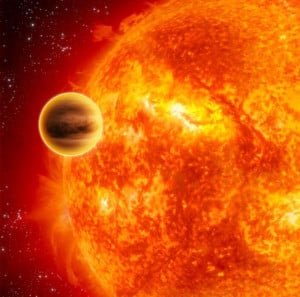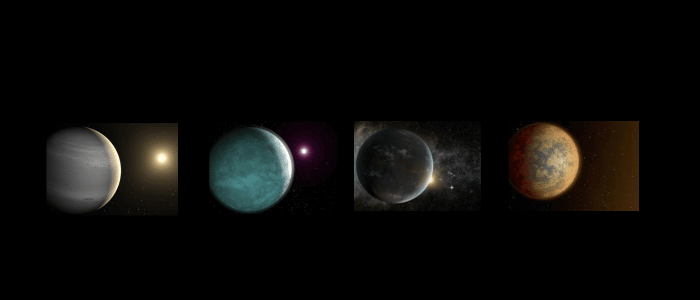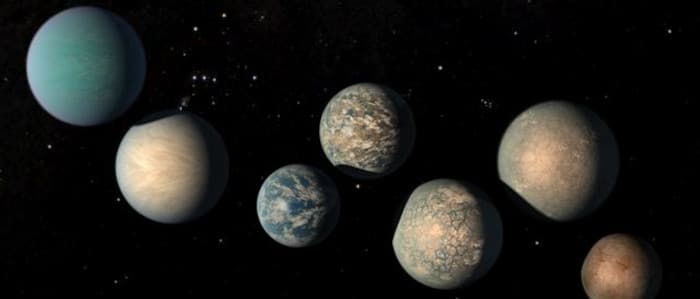What are Extrasolar Planets? You will find the answer to that question below. We have previously explored and discussed our solar system, the planets, and dwarf planets. We will now get into Extrasolar Planets or Exoplanets for short.
Extrasolar Planets Explained
An Extrasolar Planet is a planet located outside our solar system. These planets typically revolve around other stars, but some, dubbed rogue planets, are untethered to any star but do, however, orbit the galactic center of the Milky Way.
The first Exoplanet discovery occurred in 1917 but remained unconfirmed until the 1900s. As of November 1, 2022, 5,246 Exoplanets have been discovered and confirmed. Many of which are thanks to the Kepler Space Telescope. Most of these discoveries are in a very tiny subsection of the galaxy.
How Are They Discovered
Contrary to what some may think, rarely are Exoplanets discovered through direct imaging. Direct imaging is the discovery process through a telescope by sight or images. And ones found this way are generally younger planets that are orbiting farther away from other stars.
There are currently five methods that scientists use to discover Exoplanets. These methods are Radial Velocity, Transit, Direct Imaging, Gravitational Microlensing, and Astrometry. However, the two main techniques are the Transit and Radial Velocity methods.

Transit Method
The Transit Method of discovery happens when an unknown object travels between the observer and the star. This celestial object obscures the star’s light for a short time. Occlusion, in this case, indicates the existence of an Extrasolar Planet.
Method Of Radial Velocity
The wavelengths of starlight expand and contract because of directional changes in gravitational pull caused by the unseen exoplanet as it orbits the star and changes its light spectrum. Through this technique and consistent observation, they can determine if an Exoplanet causes this periodic movement or wobble.
What Are The Different Types Of Exoplanets
There are four different types of Exoplanets. They are categorized into Gas Giants, Super Earths, Neptunian, and Terrestrial planets. As you can probably intuit from the category names, the classifications have a lot to do with their size and or composition. But we will get into each in our next post.

If you are interested in finding out more about our galaxy or any of the planets like Pluto, Mars, Venus, etc. that are in our solar system feel free to click on any of the links and I will take you to some interesting articles straight away.
The Wrap Up
In conclusion, I am very excited about this topic and I will be covering it more in the coming days and weeks. I mean who knew that there were more than five thousand more confirmed planets and who knows how many more are so far undiscovered or unconfirmed out there in our universe?
This post contains affiliate links. Learn more and read our full disclosure policy here.

If you have any questions about Astro Explorations or if you have any comments that you would like to share, feel free to leave them down below and I will get back to you as soon as possible.
Disclosures & Policies
All Images Are Courtesy of NASA
References
NASA. (2022, April 13). What is an Exoplanet? Retrieved from NASA: https://exoplanets.nasa.gov/what-is-an-exoplanet/overview/


I have heard about extrasolar planets, but did not really know what they were, so I am very happy to have come across this post. It explains what an extra solar planet is in easy to understand language, as well as the methods that are normally used to discover them.
Are any of the observation methods done automatically? Or is it actually an individual that spots them? You mention that the first extrasolar planet was discovered in 1917, but do we have an indication as to how old extrasolar planets normally are? Thank you and I look forward to reading more about the types of exoplanets.
Hello Line,
I only had a broad understanding of them as well until I started digging. There is so much still out there just waiting to be discovered.
The short answer is yes. There are automated techniques that are used to validate a planet’s existence. Vespa is one of the publically available packages that is used for this. Direct Imaging is very rare, which is why the most common methods of discovery are the Transit and Radial Velocity Methods, which both utilize mathematical equations to predict their existence.
I look forward to seeing you back here again.
Have a wonderful day!
Extrasolar – wow! We are forever learning. I can say for myself, I have not given it any real thought about what is in outer space in addition to the stars and the moon which are so custom to hear about. To learn that there are 5,246 Exoplanets is mind blowing. I am still fascinated with planet earth and knowing only a fraction of what it consists of. Thanks for sharing.
Hello Faye,
It is almost incomprehensible how many possibilities exist in space that we have no concept of. That is what is so fascinating to me. I never know what I am going to find in my explorations. I hope that you will join me again.
Have a wonderful day!
This is my first time reading about extrasolar planets and was absolutely fascinated by the concept.
It’s mind-blowing to think that there could be other planets out there orbiting other stars, and even more incredible to consider the possibility that some of these planets might be able to support life.
I’ve always been interested in space and astronomy, but this really took my curiosity to a whole new level.
I can’t wait to see what else we might discover about these distant worlds and the possibilities they might hold.
Hello Lorenz,
I am also excited to see what else we discover in the future. I believe that we will also see great discoveries in the very near future because of the launch of the James Webb Space Telescope in December 2021. The JWST is the most technologically advanced and can see farther and with more detail than we have ever seen before.
I hope to see you again as I continue to explore.
Have a wonderful day!
Very interesting and organized post about exoplanets! I didn’t know there were so many discovered planets outside our solar system. It is truly amazing that these can be found and that science has found a way to research them. The universe is truly an amazing place!. Do scientists believe that any of these planets could support human life?
Hello Scott,
Thank you for joining me in my explorations. I genuinely appreciate it.
I agree our universe is a fantastic place, and there is still so much more that we still do not even have a concept of.
Scientists do believe one or more of these planets may support human life. The consensus seems to be that it will be a Terrestrial Planet or, more specifically, a Super-Earth that will hold the most significant possibility of doing this successfully.
I hope you will join me again as I continue my exploration of this topic.
Have a wonderful day!